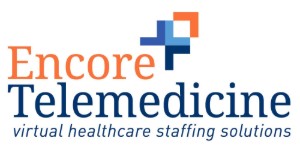With telemedicine, patients can receive access to care from locations beyond a physician’s office.[1] The concept of remote health care isn’t new, but it’s become more widespread due to all of the various forms of remote access available today, including computers and mobile devices. The nonemergency assistance provided is meant to be a complement to traditional in-person care. There are three main types of companies that offer telemedicine services, usually by providing access to the software and tools required to connect physicians and patients remotely.[2]
Store-and-Forward Telemedicine Companies
A company offering store-and-forward telemedicine, also known as asynchronous telemedicine, helps health care providers share medical information, such as lab reports, with other physicians and specialists in different locations. Similar to email, the process involves added security features to ensure that patient confidentiality is maintained. It’s a popular form of telemedicine because it makes it easier for various medical professionals to coordinate diagnoses and treatment efforts regardless of their location.
Remote Monitoring Companies
With this form of telemedicine, various technological devices are used to monitor a patient’s health and clinical signs remotely. Companies making this service available often do so with an app. The data that’s sent electronically is typically used to monitor the management of chronic diseases or conditions such as asthma, diabetes and heart disease. This form of telemedicine is often recommended for patients with conditions that will require frequent monitoring. While there is the possibility of inaccuracies because patients will be submitting results themselves electronically, results are usually very similar to what’s seen with professional, in-person patient testing. Companies set up to offer services this way often provide specific instructions for patients on how to submit their medical stats electronically to minimize errors. Telemedicine performed this way is also being used to monitor older adults at home and in elderly care facilities.
Real-Time Interactive Service Companies
Companies set up to offer this service for physicians and health care practices use video conferencing software to allow patients and providers to communicate and connect. In some situations, real-time visits can be an acceptable substitute for an in-person visit. This form of telemedicine may be used for follow-up visits, primary care and the management of chronic conditions. Real-time visits are sometimes used in urgent care situations when a patient doesn’t have immediate access to in-person assistance from a health professional. It should be noted that telemarketing companies that offer real-time connections do so with technology that protects patient privacy as required by Health Insurance Portability and Accountability Act.[3]
It’s estimated that about 12 million people used services provided by companies offering some form of telemedicine in 2016.[4] Telemedicine is likely to continue to be adopted by various health care providers. As for how patients use it, some will appreciate the convenience of remote medical care as a supplement to office visits while others may feel more comfortable with in-person care only. However, companies are making it easier to access this technology by easing the technical burden for physicians and patients.
If you are interested in discussing how a telemedicine doctor network can help your healthcare organization, please click below.
References:
1. https://www.verywell.com/must-know-facts-about-telemedicine-3146404
2. https://www.news-medical.net/health/Types-of-Telemedicine.aspx
3. http://www.hipaajournal.com/hipaa-guidelines-on-telemedicine/
4. https://www.wsj.com/articles/how-telemedicine-is-transforming-health-care-1466993402

